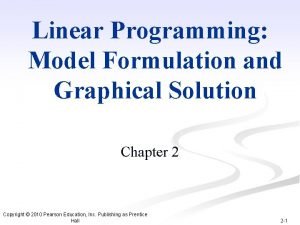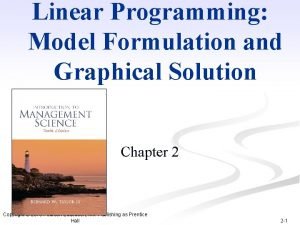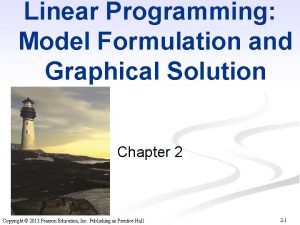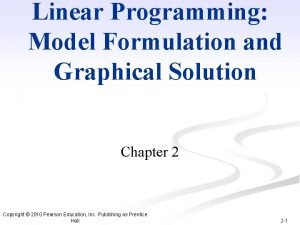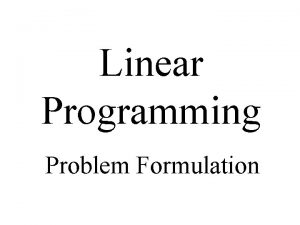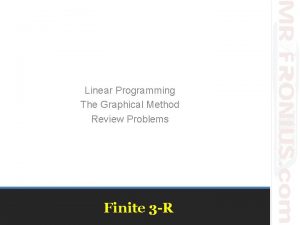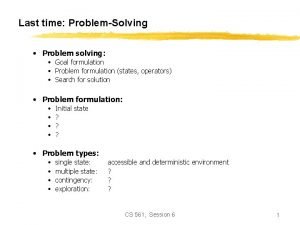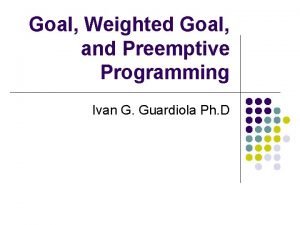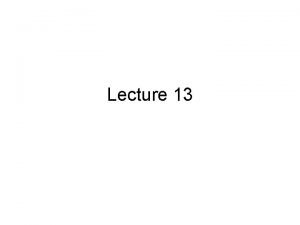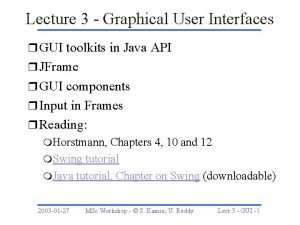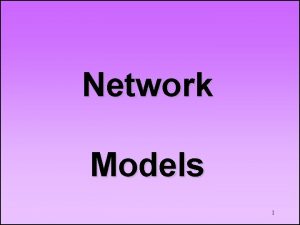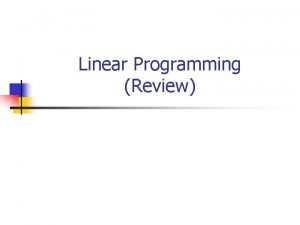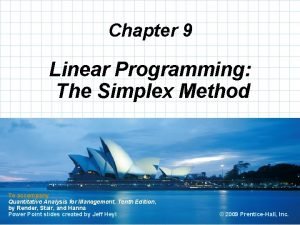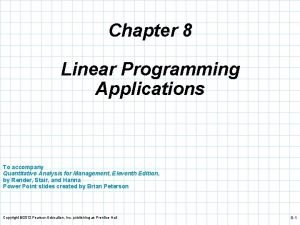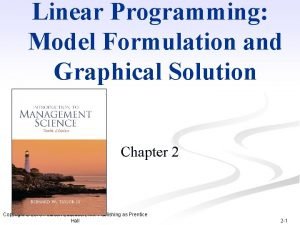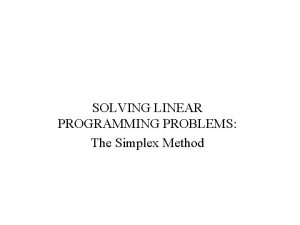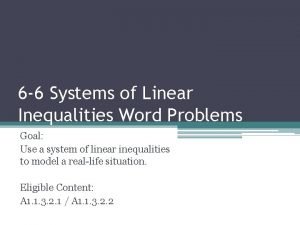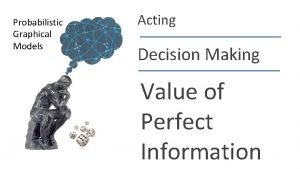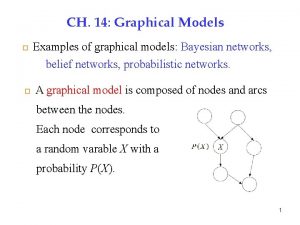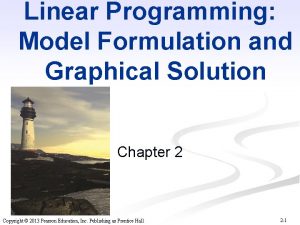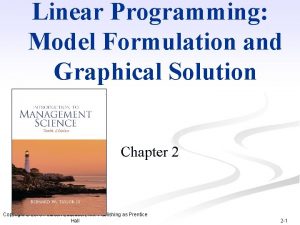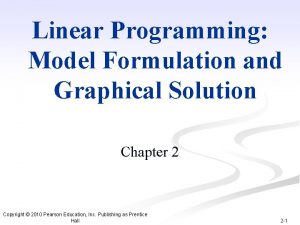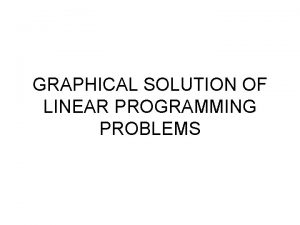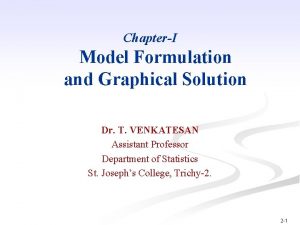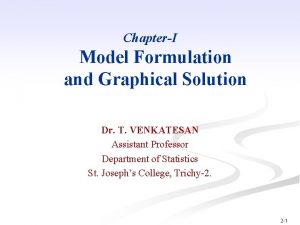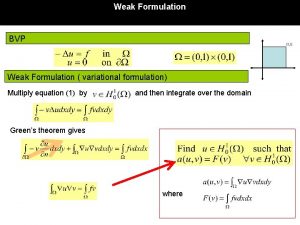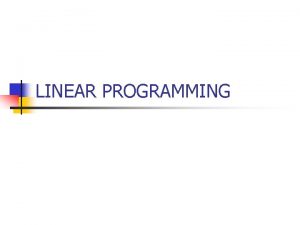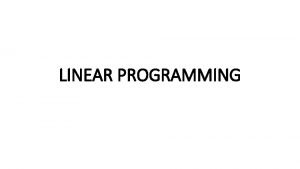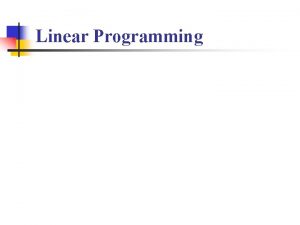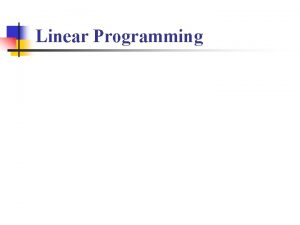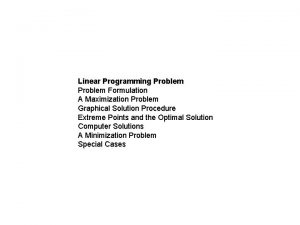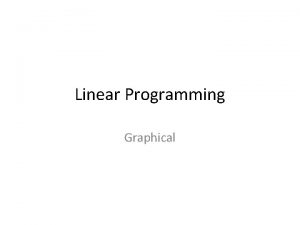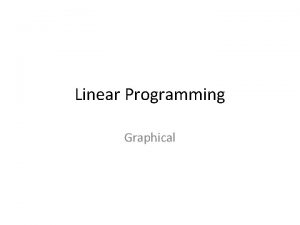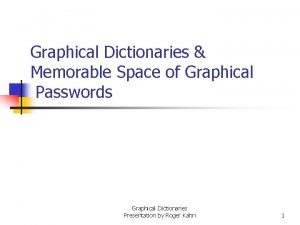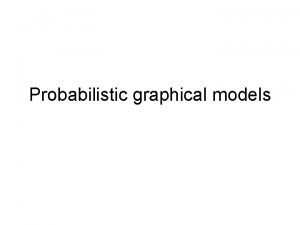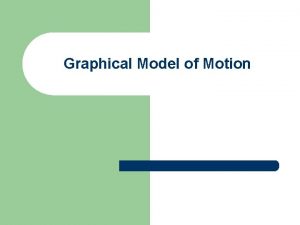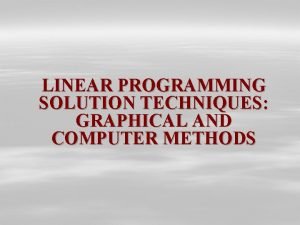Linear Programming Model Formulation and Graphical Solution Chapter


























- Slides: 26

Linear Programming: Model Formulation and Graphical Solution Chapter 2 Copyright © 2010 Pearson Education, Inc. Publishing as Prentice Hall 2 -1

Chapter Topics n Model Formulation n A Maximization Model Example n Graphical Solutions of Linear Programming Models n A Minimization Model Example n Irregular Types of Linear Programming Models n Characteristics of Linear Programming Problems Copyright © 2010 Pearson Education, Inc. Publishing as Prentice Hall 2 -2

Linear Programming: An Overview n Objectives of business decisions frequently involve maximizing profit or minimizing costs. n Linear programming uses linear algebraic relationships to represent a firm’s decisions, given a business objective, and resource constraints. n Steps in application: 1. Identify problem as solvable by linear programming. 2. Formulate a mathematical model of the unstructured problem. 3. Solve the model. 4. Implementation Copyright © 2010 Pearson Education, Inc. Publishing as Prentice Hall 2 -3

Model Components n Decision variables - mathematical symbols representing levels of activity of a firm. n Objective function - a linear mathematical relationship describing an objective of the firm, in terms of decision variables - this function is to be maximized or minimized. n Constraints – requirements or restrictions placed on the firm by the operating environment, stated in linear relationships of the decision variables. n Parameters - numerical coefficients and constants used in the objective function and constraints. Copyright © 2010 Pearson Education, Inc. Publishing as Prentice Hall 2 -4

Summary of Model Formulation Steps Step 1 : Clearly define the decision variables Step 2 : Construct the objective function Step 3 : Formulate the constraints Copyright © 2010 Pearson Education, Inc. Publishing as Prentice Hall 2 -5

LP Model Formulation A Maximization Example (1 of 4) n Product mix problem - Beaver Creek Pottery Company n How many bowls and mugs should be produced to maximize profits given labor and materials constraints? n Product resource requirements and unit profit: Resource Requirements Labor (Hr. /Unit) Clay (Lb. /Unit) Profit ($/Unit) Bowl 1 4 40 Mug 2 3 50 Product Copyright © 2010 Pearson Education, Inc. Publishing as Prentice Hall 2 -6

LP Model Formulation A Maximization Example (2 of 4) Copyright © 2010 Pearson Education, Inc. Publishing as Prentice Hall 2 -7

LP Model Formulation A Maximization Example (3 of 4) Resource 40 hrs of labor per day Availability: 120 lbs of clay Decision Variables: x 1 = number of bowls to produce per day x 2 = number of mugs to produce per day Objective Function: Maximize Z = $40 x 1 + $50 x 2 Where Z = profit per day Resource 1 x 1 + 2 x 2 40 hours of labor Constraints: 4 x 1 + 3 x 2 120 pounds of clay Non-Negativity Constraints: x 1 0; x 2 0 Copyright © 2010 Pearson Education, Inc. Publishing as Prentice Hall 2 -8

LP Model Formulation A Maximization Example (4 of 4) Complete Linear Programming Model: Maximize Z = $40 x 1 + $50 x 2 subject to: 1 x 1 + 2 x 2 40 4 x 1 + 3 x 2 120 x 1, x 2 0 Copyright © 2010 Pearson Education, Inc. Publishing as Prentice Hall 2 -9

Feasible Solutions A feasible solution does not violate any of the constraints: Example: x 1 = 5 bowls x 2 = 10 mugs Z = $40 x 1 + $50 x 2 = $700 Labor constraint check: 1(5) + 2(10) = 25 < 40 hours Clay constraint check: 4(5) + 3(10) = 70 < 120 pounds Copyright © 2010 Pearson Education, Inc. Publishing as Prentice Hall 2 -10

Infeasible Solutions An infeasible solution violates at least one of the constraints: Example: x 1 = 10 bowls x 2 = 20 mugs Z = $40 x 1 + $50 x 2 = $1400 Labor constraint check: 1(10) + 2(20) = 50 > 40 hours Copyright © 2010 Pearson Education, Inc. Publishing as Prentice Hall 2 -11

Graphical Solution of LP Models n Graphical solution is limited to linear programming models containing only two decision variables (can be used with three variables but only with great difficulty). n Graphical methods provide visualization of how a solution for a linear programming problem is obtained. Copyright © 2010 Pearson Education, Inc. Publishing as Prentice Hall 2 -12

Coordinate Axes Graphical Solution of Maximization Model (1 of 12) X 2 is mugs Maximize Z = $40 x 1 + $50 x 2 subject to: 1 x 1 + 2 x 2 40 4 x 1 + 3 x 2 120 x 1, x 2 0 X 1 is bowls Figure 2. 2 Coordinates for Graphical Analysis Copyright © 2010 Pearson Education, Inc. Publishing as Prentice Hall 2 -13

Labor Constraint Graphical Solution of Maximization Model (2 of 12) Maximize Z = $40 x 1 + $50 x 2 subject to: 1 x 1 + 2 x 2 40 4 x 1 + 3 x 2 120 x 1, x 2 0 Figure 2. 3 Graph of Labor Constraint Copyright © 2010 Pearson Education, Inc. Publishing as Prentice Hall 2 -14

Labor Constraint Area Graphical Solution of Maximization Model (3 of 12) Maximize Z = $40 x 1 + $50 x 2 subject to: 1 x 1 + 2 x 2 40 4 x 1 + 3 x 2 120 x 1, x 2 0 Figure 2. 4 Labor Constraint Area Copyright © 2010 Pearson Education, Inc. Publishing as Prentice Hall 2 -15

Clay Constraint Area Graphical Solution of Maximization Model (4 of 12) Maximize Z = $40 x 1 + $50 x 2 subject to: 1 x 1 + 2 x 2 40 4 x 1 + 3 x 2 120 x 1, x 2 0 Copyright © 2010 Pearson Education, Inc. Publishing as Prentice Hall Figure 2. 5 Clay Constraint Area 2 -16

Both Constraints Graphical Solution of Maximization Model (5 of 12) Maximize Z = $40 x 1 + $50 x 2 subject to: 1 x 1 + 2 x 2 40 4 x 1 + 3 x 2 120 x 1, x 2 0 Figure 2. 6 Graph of Both Model Constraints Copyright © 2010 Pearson Education, Inc. Publishing as Prentice Hall 2 -17

Feasible Solution Area Graphical Solution of Maximization Model (6 of 12) Maximize Z = $40 x 1 + $50 x 2 subject to: 1 x 1 + 2 x 2 40 4 x 1 + 3 x 2 120 x 1, x 2 0 Figure 2. 7 Feasible Solution Area Copyright © 2010 Pearson Education, Inc. Publishing as Prentice Hall 2 -18

Objective Function Solution = $800 Graphical Solution of Maximization Model (7 of 12) Maximize Z = $40 x 1 + $50 x 2 subject to: 1 x 1 + 2 x 2 40 4 x 1 + 3 x 2 120 x 1, x 2 0 Figure 2. 8 Objection Function Line for Z = $800 Copyright © 2010 Pearson Education, Inc. Publishing as Prentice Hall 2 -19

Alternative Objective Function Solution Lines Graphical Solution of Maximization Model (8 of 12) Maximize Z = $40 x 1 + $50 x 2 subject to: 1 x 1 + 2 x 2 40 4 x 1 + 3 x 2 120 x 1, x 2 0 Figure 2. 9 Alternative Objective Function Lines Copyright © 2010 Pearson Education, Inc. Publishing as Prentice Hall 2 -20

Optimal Solution Graphical Solution of Maximization Model (9 of 12) Maximize Z = $40 x 1 + $50 x 2 subject to: 1 x 1 + 2 x 2 40 4 x 1 + 3 x 2 120 x 1, x 2 0 Figure 2. 10 Identification of Optimal Solution Point Copyright © 2010 Pearson Education, Inc. Publishing as Prentice Hall 2 -21

Optimal Solution Coordinates Graphical Solution of Maximization Model (10 of 12) Maximize Z = $40 x 1 + $50 x 2 subject to: 1 x 1 + 2 x 2 40 4 x 1 + 3 x 2 120 x 1, x 2 0 Figure 2. 11 Optimal Solution Coordinates Copyright © 2010 Pearson Education, Inc. Publishing as Prentice Hall 2 -22

Extreme (Corner) Point Solutions Graphical Solution of Maximization Model (11 of 12) Maximize Z = $40 x 1 + $50 x 2 subject to: 1 x 1 + 2 x 2 40 4 x 1 + 3 x 2 120 x 1, x 2 0 Figure 2. 12 Solutions at All Corner Points Copyright © 2010 Pearson Education, Inc. Publishing as Prentice Hall 2 -23

Optimal Solution for New Objective Function Graphical Solution of Maximization Model (12 of 12) Maximize Z = $70 x 1 + $20 x 2 subject to: 1 x 1 + 2 x 2 40 4 x 1 + 3 x 2 120 x 1, x 2 0 Figure 2. 13 Optimal Solution with Z = 70 x 1 + 20 x 2 Copyright © 2010 Pearson Education, Inc. Publishing as Prentice Hall 2 -24

Slack Variables n n Standard form requires that all constraints be in the form of equations (equalities). A slack variable is added to a constraint (weak inequality) to convert it to an equation (=). n A slack variable typically represents an unused resource. n A slack variable contributes nothing to the objective function value. Copyright © 2010 Pearson Education, Inc. Publishing as Prentice Hall 2 -25

Linear Programming Model: Standard Form Max Z = 40 x 1 + 50 x 2 + s 1 + s 2 subject to: 1 x 1 + 2 x 2 + s 1 = 40 4 x 1 + 3 x 2 + s 2 = 120 x 1, x 2, s 1, s 2 0 Where: x 1 = number of bowls x 2 = number of mugs s 1, s 2 are slack variables Figure 2. 14 Solution Points A, B, and C with Slack Copyright © 2010 Pearson Education, Inc. Publishing as Prentice Hall 2 -26
 Linear programming model formulation and graphical solution
Linear programming model formulation and graphical solution Linear programming model formulation and graphical solution
Linear programming model formulation and graphical solution Linear programming model
Linear programming model Lp model formulation example
Lp model formulation example Linear programming models graphical and computer methods
Linear programming models graphical and computer methods Cotton thread
Cotton thread Graphical method linear programming calculator
Graphical method linear programming calculator Why problem formulation follow goal formulation
Why problem formulation follow goal formulation Perbedaan linear programming dan integer programming
Perbedaan linear programming dan integer programming Integer programming vs linear programming
Integer programming vs linear programming Definisi linear
Definisi linear Goal programming
Goal programming Mathematical formulation of dynamic programming
Mathematical formulation of dynamic programming Java gui for r
Java gui for r Network model linear programming
Network model linear programming Characteristics of linear programming model
Characteristics of linear programming model The zj row in a simplex table for maximization represents
The zj row in a simplex table for maximization represents Chapter 8 linear programming applications solutions
Chapter 8 linear programming applications solutions Ideal solution and non ideal solution
Ideal solution and non ideal solution Lp model formulation
Lp model formulation Linear programming
Linear programming Systems of linear inequalities worksheet
Systems of linear inequalities worksheet Greedy algorithm vs dynamic programming
Greedy algorithm vs dynamic programming System programming definition
System programming definition What graphical model is appropriate for decision-making?
What graphical model is appropriate for decision-making? Examples of graphical models
Examples of graphical models Kinetic energy pyramid
Kinetic energy pyramid
